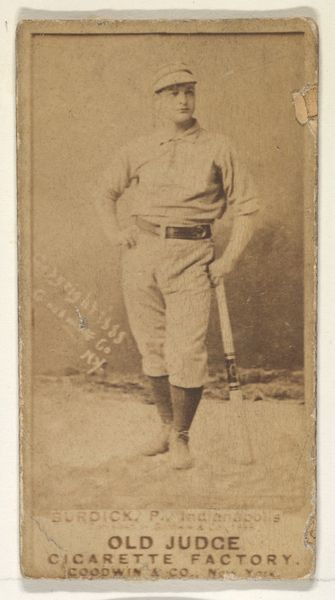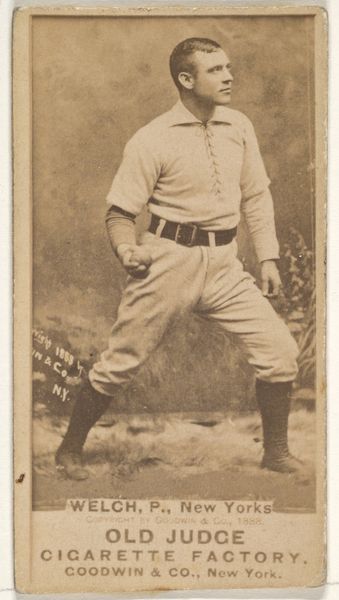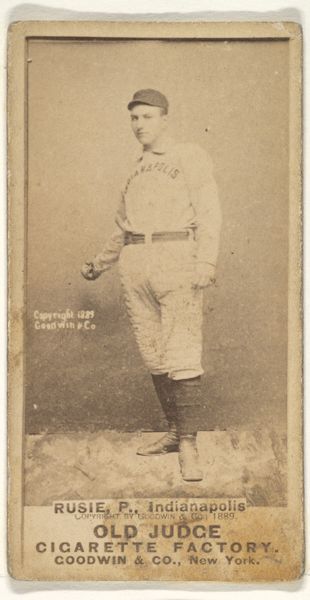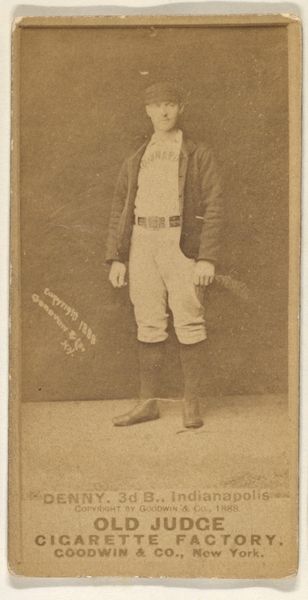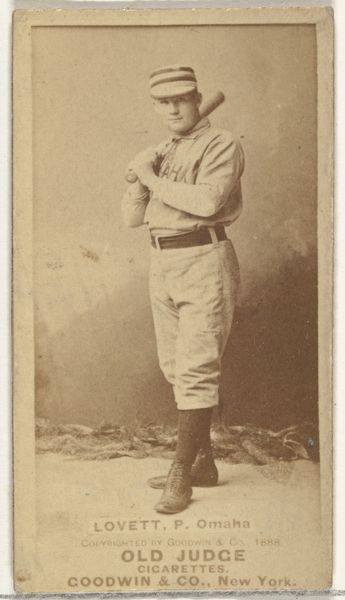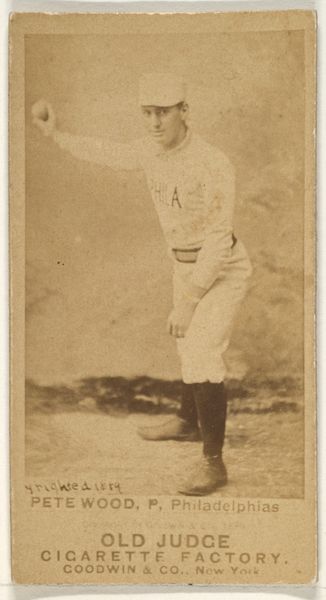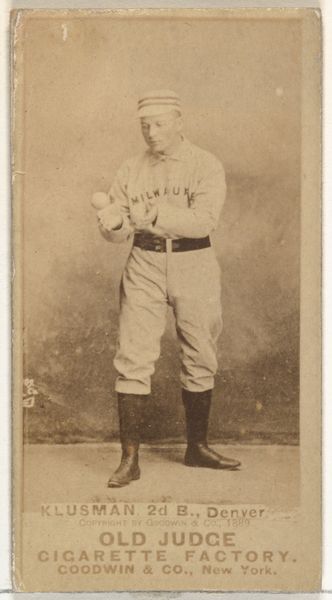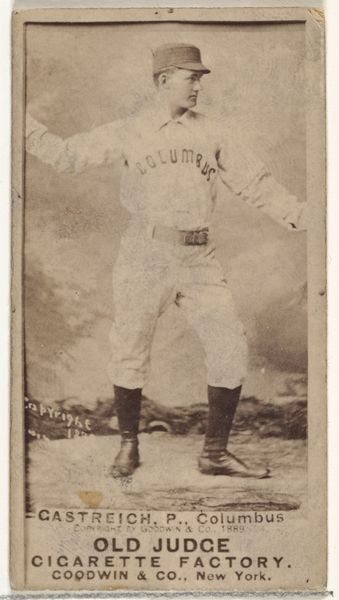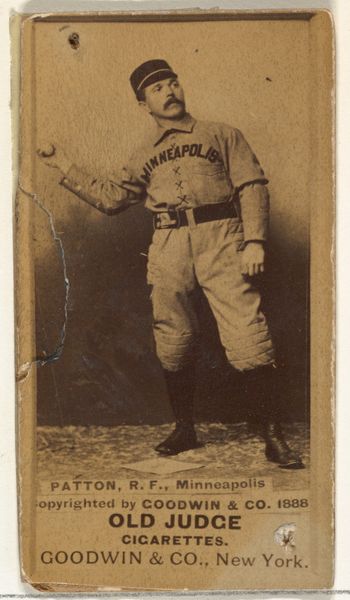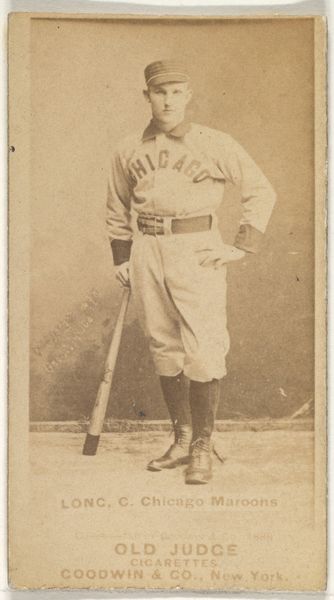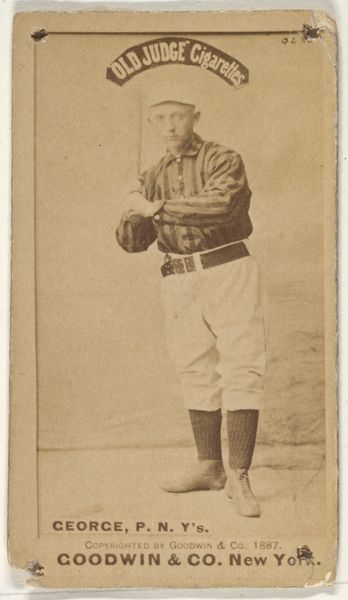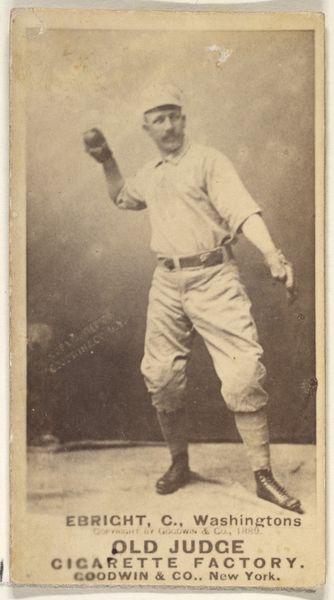
Messitt, Right Field, Omaha Omahogs/ Lambs, from the Old Judge series (N172) for Old Judge Cigarettes 1888
0:00
0:00
drawing, print, photography
#
portrait
#
drawing
# print
#
baseball
#
photography
#
men
#
athlete
Dimensions: sheet: 2 11/16 x 1 3/8 in. (6.9 x 3.5 cm)
Copyright: Public Domain
Curator: Take a moment to look at this photographic print from 1888. It's titled "Messitt, Right Field, Omaha Omahogs/Lambs, from the Old Judge series (N172) for Old Judge Cigarettes," created by Goodwin & Company. Editor: There’s a stark simplicity to it. The sepia tone lends an antique gravity. The figure's pose, however, is less about monumentality and more about… what would you say? Earnestness? The light catching the baseball uniform, everything is subtly graded. Curator: Earnestness definitely resonates. These cards, distributed with cigarettes, functioned as promotional material, contributing to the burgeoning celebrity culture around athletes. Think about it, this image played a role in constructing narratives of masculinity and national identity. Baseball was becoming “America’s pastime,” shaping ideals of strength, skill, and teamwork that reinforced social norms and hierarchies. Editor: I see your point about its broader social context. I am looking, instead, at the carefully arranged composition, the subject's central placement, how the subtle variations in tone create depth. The clarity almost reminds me of the later photographic experiments. Curator: Indeed, photography during this period was still finding its footing, still wrestling with how to portray the everyday. This card represents a pivotal moment in advertising. And consider this too: for many, these cards were one of their first opportunities to encounter and interact with images of baseball players, widening public recognition but through commodification. Editor: Do you believe the rigid pose, combined with the background texture, are attempts to evoke painterly styles then dominant, a way for the public to validate the new technology by conforming to their already established perceptions? Curator: It could be viewed through that lens. The framing invites reflections on celebrity endorsement—what images are being pushed, who gets visibility, and what does it tell us about gender roles or cultural values that underpinned the sport's widespread popularity. The absence of women in these early baseball images, for example, is deafening. Editor: I remain intrigued by the composition. By setting the entire image in this sepia hue, the player becomes a figure suspended in time. What will stick with me, however, is how its formal elements achieve a rather haunting effect. Curator: It's remarkable to see how a seemingly simple image can be layered with insights when viewed through the lenses of sport history, photographic technology, consumerism and sociology.
Comments
No comments
Be the first to comment and join the conversation on the ultimate creative platform.
